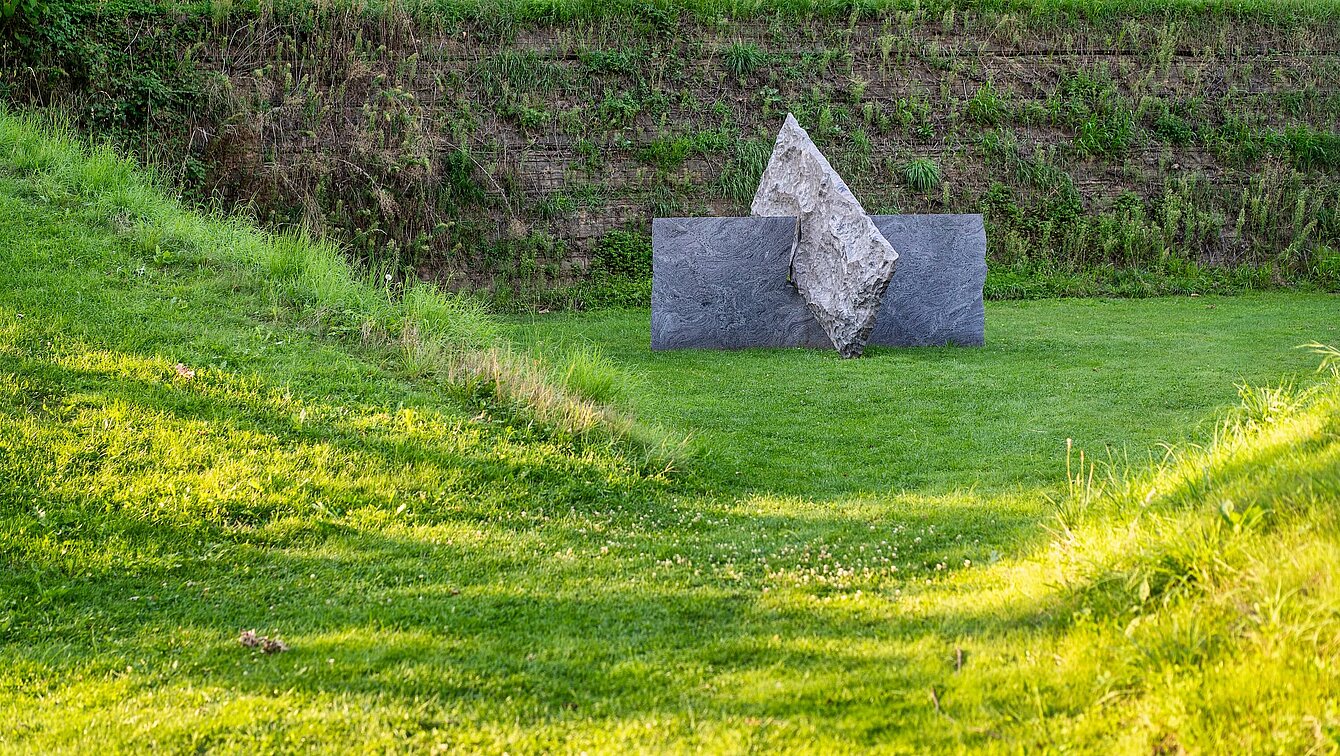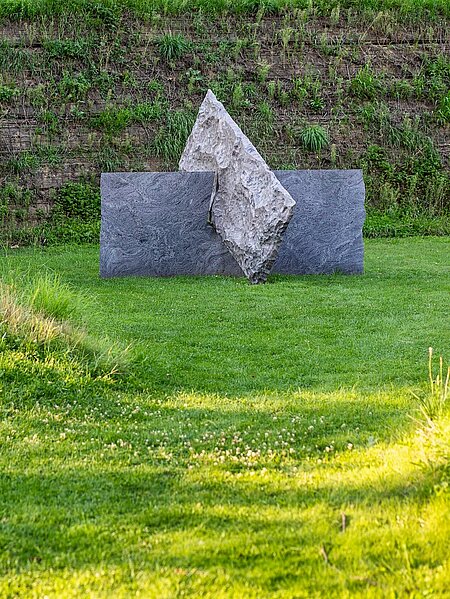Often by using just a few interventions in the natural form of the stone, Ölzant seeks to reveal its individual structure. He visualises the effects of weathering or recalls the ritual use of stones in prehistoric times. This sculpture extends out far into the space beyond its base. The tension created between the two stone slabs highlights the contrast between weight and floating, while at the same time resulting in a sense of balance and dynamics. The different surface finishing brings out the inherent characteristics of the stone—its grain, its structure, its life. It also serves to emphasise how the artist has handled and processed the material.
Fu mit dem schönen Mandarin [Fu and the beautiful mandarin]
Franz Xaver Ölzant, 1993


Image Credits
Author
Gudrun Danzer
Location on map
Position 29
Owner
Universalmuseum Joanneum
Artist biography
Franz Xaver Ölzant
Show all
About the sculpture
Ölzant’s work occupies a special position within the Austrian sculpture landscape. The biomorph sculpture of the 20th century, with Jean Arp and Henry Moore as the main protagonists, was an important impulse for the artist, who lives a secluded life in the Waldviertel region of lower Austria, to experiment with nature and various areas of cultural history.
Towards the late 1970s, Ölzant began to work with stone on a very large scale, especially with diorite and granite. With sometimes just a few interventions in the natural shape of the stone, he seeks to reveal its individual structure, simulates the effect of the weather on the crystalline body, or, in the sort of fusion of the cultured and the natural that is typical for his work, evokes associations with the primal, cultic use of stones.
In “Fu und der schöne Mandarin“, Ölzant succeeded in creating a multi-layered work with the apparently simple arrangement of two rectangular granite slabs: the overlapping of the slabs at a right angle and the slanted position of the upper slab seem to spatially expand the figure.
A tension is created between the two volumes, investigating the contrast between weight and balance and creating a sense of equilibrium and dynamic at the same time. There is a sharp contrast between light and shadow in this work.
The different surface finishing of the slabs brings out the characteristics of the stone – its grain, its structure, its “life” – but also reveals the phases of the artist’s treatment of the material.
Finally, the interlinking of the two slabs in the form of a cross lends the work a symbolic component. It is as if a symbol whose meaning cannot be interpreted unambiguously has been put up in this landscape. The exotic title leaves this ambiguity untouched and invites viewers to develop their own associations.



















